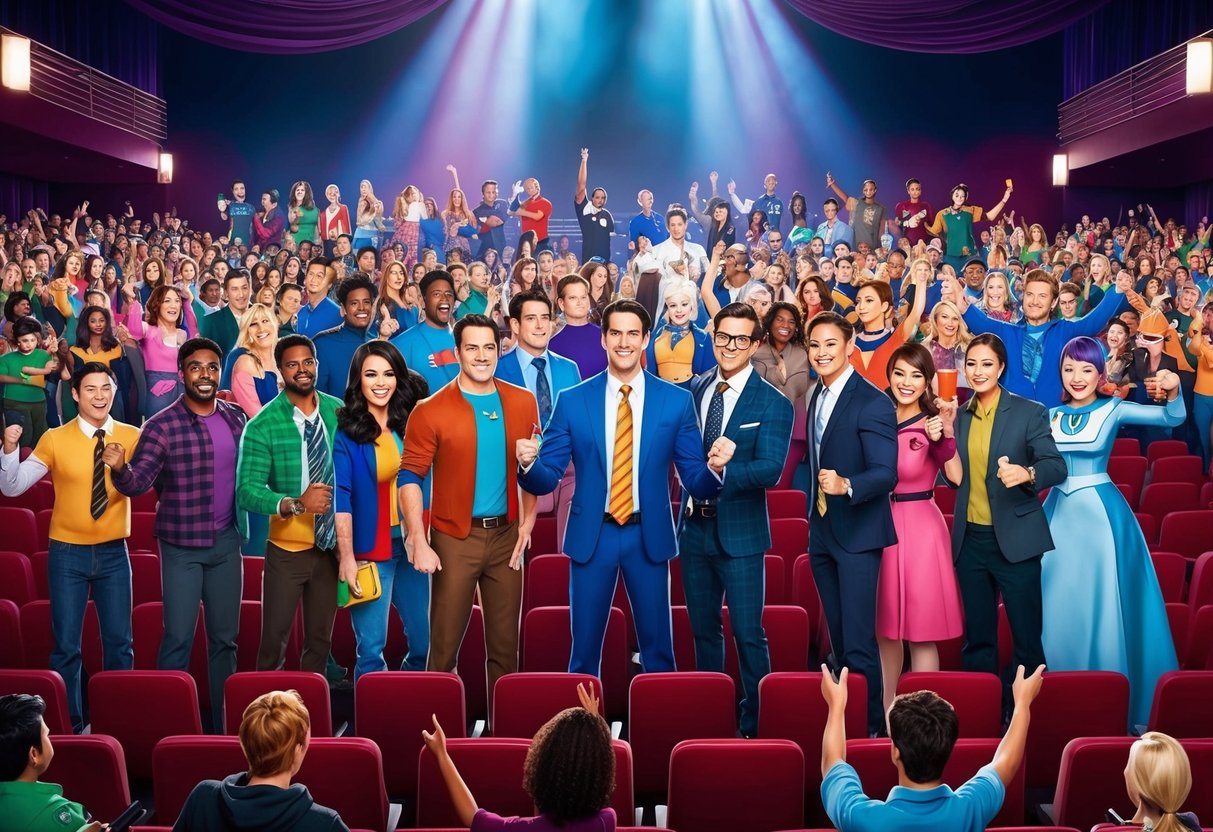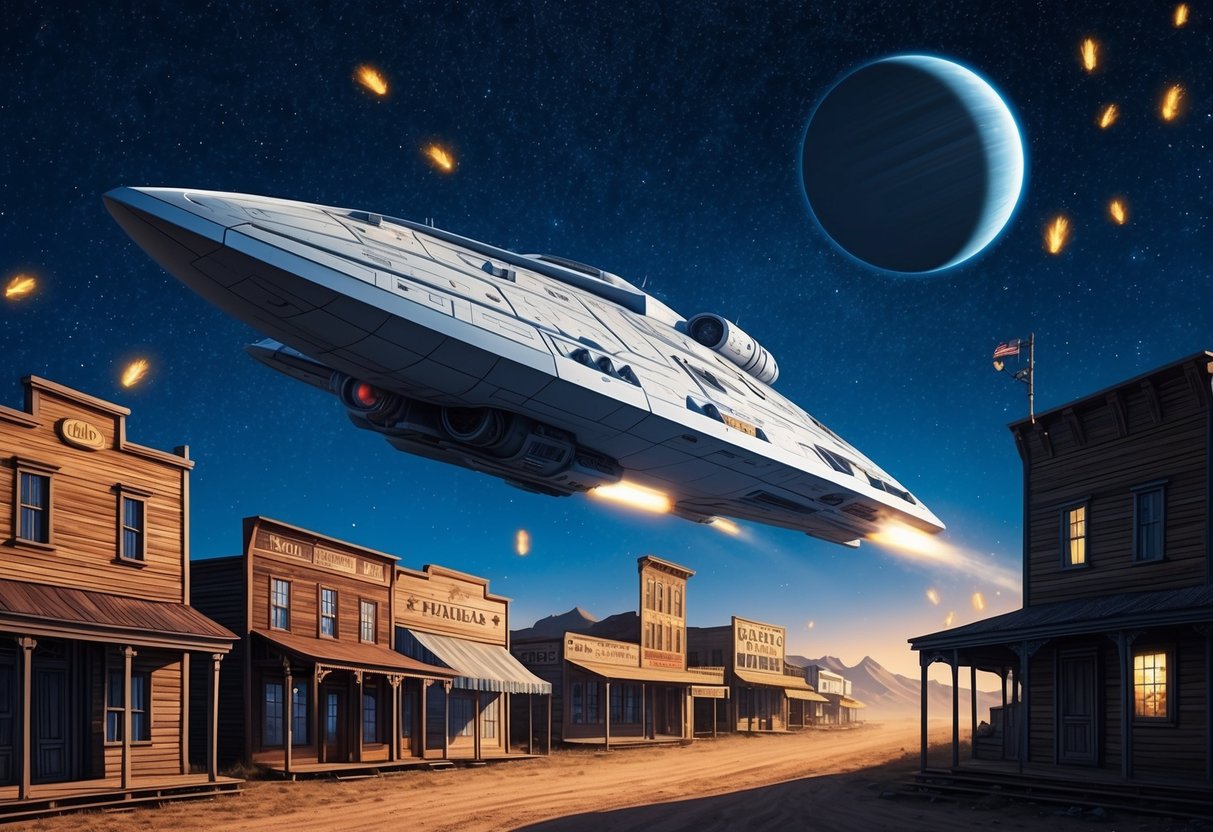
Firefly: The Space Western Phenomenon

Firefly mixes unique world-building with genre-bending elements. It stands out for its blend of space western themes, complex characters, and its legacy after a short-lived original run.
Cult Status and Early Cancellation
Firefly is widely recognized as one of the most prominent cult TV shows of the early 2000s. Created by Joss Whedon, it premiered on Fox in 2002.
Despite a strong cast and innovative storytelling, the series was abruptly cancelled after just 14 episodes due to low ratings and scheduling issues. The show’s early cancellation sparked widespread disappointment among viewers.
Over time, Firefly’s reputation grew, cementing its place as a classic in the science fiction and space western genres. It found new life in DVD sales, streaming platforms, and fan conventions, with dedicated “Browncoat” fans keeping its legacy alive.
Key aspects contributing to its cult status:
- Distinctive space western setting
- Memorable ensemble cast and writing
- Lasting community-driven support
Firefly’s fandom even led to the production of the feature film Serenity, continuing the story and helping the series reach new viewers. Firefly is regularly cited among the top cult sci-fi shows that found strong followings after cancellation.
Influence on Science Fiction TV
Firefly’s influence on science fiction television can be seen in later shows that blend genres or emphasize character-driven storytelling. It helped popularize the space western subgenre, inspiring creators to mix elements of classic westerns, outer space frontiers, and alien encounters.
The series demonstrated how science fiction TV could address mature themes, such as morality, survival, and the human condition, without relying solely on aliens or futuristic technology. Shows like Final Space and others have echoed Firefly’s combination of humor, drama, and ensemble casts.
Firefly’s commitment to grounded, lived-in settings and dialogue pushed science fiction TV toward more relatable, character-centric narratives. Its impact is felt across fan communities and genre television, showing that shows with brief lifespans can still leave a significant mark.
Today, Firefly is regularly included in lists of the most ambitious and best space western TV shows ever made.
Twin Peaks: Surreal Mystery with Lasting Appeal
Twin Peaks quickly earned a place among the most influential cult TV shows, thanks to its unconventional narrative style and the community’s fascination with its unresolved mysteries. Its unique mix of surrealism, small-town atmosphere, and psychological intrigue set new standards for dramatic television.
Innovative Storytelling and Visuals
Created by David Lynch and Mark Frost, Twin Peaks broke away from the typical procedural dramas of its time by weaving together crime, soap opera, and supernatural elements. The story begins with the murder of Laura Palmer, drawing viewers into a web of secrets that define the eerie town of Twin Peaks.
What set it apart was its willingness to mix dreamlike sequences with dark humor and unsettling visuals. The series utilized unconventional camera angles, unique lighting, and a haunting, minimalist score to amplify its otherworldly tone.
Characters like FBI Agent Dale Cooper, with his methodical quirks and fascination with dreams, became breakout figures in popular culture. These creative choices helped Twin Peaks garner critical acclaim and a lasting reputation for innovative television, influencing many subsequent shows in both mystery and drama genres.
Enduring Fan Theories
Since its original airing, Twin Peaks has spawned a dedicated fanbase that continues to dissect its puzzles and ambiguities. Key questions—such as the true nature of the Black Lodge or the symbolism behind recurring characters—fuel ongoing discussions online and at conventions.
Fans analyze everything from the significance of the “Red Room” to cryptic dialogue and symbolic motifs hidden throughout episodes. The show’s refusal to supply easy answers is a major reason why it features prominently in lists of the best cult shows.
Twin Peaks’ community-driven theory crafting has turned its most enigmatic moments into enduring pop culture touchstones.
Freaks and Geeks: A Cult Classic of Coming-of-Age
Freaks and Geeks balances honest depictions of adolescence with sharp writing and complex characters. The show gained cult status for exploring real teen experiences seldom addressed in other series, influencing both fans and later television.
Representation of Social Issues
The series stands out for tackling social issues like bullying, family dynamics, mental health, and economic hardship with depth and sensitivity. Characters face exclusion, pressure to fit in, and the pain of not meeting parents’ expectations.
Episodes explore class divides—some students struggle for money or juggle jobs, while others face different pressures at home. Mental health is depicted through storylines like guidance counseling and family conflicts rather than “very special episodes” or heavy-handed speeches.
The diverse cast of “freaks” and “geeks” illustrates how teenagers feel marginalized or misunderstood in mainstream culture. Classroom settings, school events, and after-school hangouts highlight real issues like gender roles and academic pressure.
These stories reflect the complex social worlds that teens navigate daily.
Nostalgic Portrayal of Adolescence
Set in early 1980s Michigan, Freaks and Geeks captures school dances, garage bands, and awkward romantic encounters with meticulous period detail. The classic soundtrack, fashion, and set design invite viewers into the atmosphere of late-20th-century American suburbia.
The writing focuses on small moments: riding the bus, talking in basements, or struggling with new friendships. These details evoke universal memories of teen years, regardless of the era.
Personal growth unfolds naturally, without resorting to melodrama. Its cult following reflects how these nostalgic elements still connect with audiences today, as detailed by discussions on shows like Freaks and Geeks.



